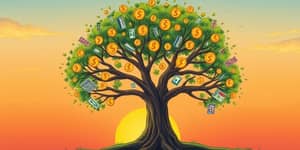
Investment decisions are rarely made in a vacuum of pure logic. irrational or emotional investment choices can drive market behavior just as much as balance sheets and ratios. Behavioral finance provides a framework to examine how human psychology interacts with economic decision-making, allowing investors to recognize biases, avoid common pitfalls, and improve long-term performance.
By understanding why we behave the way we do with money, both individuals and professionals can craft strategies that align with real human tendencies rather than idealized rational models.
The seeds of behavioral finance were planted over a century ago when George Seldon published Psychology of the Stock Market in 1912, challenging the belief that markets are solely rational. The field gained momentum in 1979 when Daniel Kahneman and Amos Tversky introduced prospect theory and bounded rationality, demonstrating that people value gains and losses asymmetrically.
Kahneman’s Nobel Prize in Economics (2002) and Richard Thaler’s work on mental accounting further cemented behavioral finance as a central pillar in understanding market anomalies. Today, interdisciplinary research continues to expand our knowledge of how emotions and cognitive shortcuts influence trading, asset pricing, and portfolio allocation.
At the heart of behavioral finance are a set of recurring themes that explain why market participants deviate from classical economic assumptions:
Understanding specific biases enables investors to spot their own vulnerabilities and adopt corrective strategies:
Case studies bring behavioral finance to life, showing how biases play out in actual markets:
• Panic Selling: “Mark,” a long-term investor, faced a steep market decline. His intense recency bias and loss aversion nearly led him to liquidate his portfolio at a trough—only to realize later that staying invested would have recovered his losses within months.
• Bitcoin Bubble (2017–2018): Unprecedented price surges and media hype triggered widespread herd behavior. Investors who bought near all-time highs experienced steep losses when the bubble burst.
• Warren Buffett’s Coca-Cola Investment: Amid widespread pessimism in the late 1980s, Buffett displayed contrarian thinking and patience, acquiring shares at depressed prices and reaping rewards for decades.
• JP Morgan’s Advisory Model: The firm built financial products and services that explicitly countered common client biases—like providing automated alerts to prevent premature profit-taking driven by overconfidence.
Investors and advisors can deploy a variety of practical tools to mitigate cognitive pitfalls:
Behavioral finance continues evolving as technology and data analytics unlock new insights. We can expect:
• Greater integration of machine learning algorithms that provide real-time bias detection and personalized nudges.
• Expansion of behavioral principles into automated advisory platforms, ensuring that psychological factors are embedded into portfolio construction rules.
• Enhanced collaboration between psychologists, economists, and data scientists to develop ever more sophisticated models of human decision-making under uncertainty.
Emotions and cognitive shortcuts shape financial markets more powerfully than traditional theory acknowledges. By recognizing biases such as loss aversion, overconfidence, and herd behavior, investors can implement strategies that counteract these instincts and align their portfolios with long-term goals.
Ultimately, the blend of psychology and economics in behavioral finance offers a powerful toolkit to master emotions and craft investment plans that withstand both market volatility and human fallibility.
References













